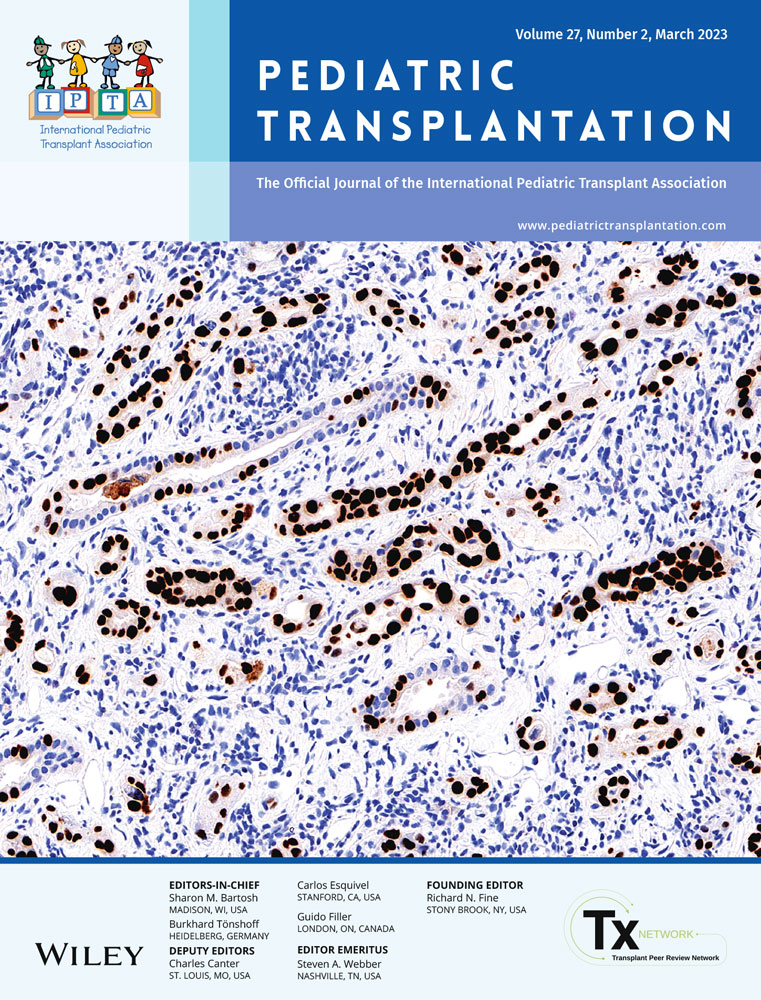Hematopoietic stem cell transplantation in serine/threonine kinase 4 (STK4) deficiency: Report of two cases and literature review
Abstract
Background
Serine/threonine kinase 4 (STK4) deficiency is a combined immunodeficiency (CID) characterized by early onset recurrent bacterial, viral, and fungal infections. Allogeneic hematopoietic stem cell transplantation (HSCT) is a curative therapy for CID; however, little is known about the necessity and benefits of HSCT in patients with STK4 deficiency.
Methods
We report two siblings with STK4 deficiency transplanted from two unrelated donors with the same conditioning regimen.
Results
In the conditioning regimen, rituximab was given on Day −11 (375 mg/m2), and sirolimus was added on the same day. Busulfan was administered at a myeloablative dose (3.2 mg/kg; Days −7 to −4) with 150 mg/m2 of fludarabine (Days −7 to −3). They were transplanted with peripheral blood stem cells, and graft-versus-host disease (GVHD) prophylaxis was administered with 10 mg/m2 methotrexate on Days 1, 3, and 6. In addition, mycophenolate mofetil (MMF) was started on Day 1 with ongoing use of sirolimus. We did not encounter veno-occlusive disease (VOD), high-grade acute GVHD, or significant organ toxicity in either patient. Both patients were well at the end of the first year after HSCT with complete donor chimerism.
Conclusions
Serine/threonine kinase 4 deficiency is a disease with high mortality post-HSCT; therefore, the conditioning regimen and GVHD prophylaxis strategies are important considerations in these patients. In our opinion, the conditioning regimen, which includes rituximab and busulfan and fludarabine (BU-FLU), GVHD prophylaxis with sirolimus and MMF, and short-term methotrexate, offers favorable outcomes and is well tolerated in our STK4-deficient patients.
CONFLICT OF INTEREST
There are no conflicts of interest to declare.
Open Research
DATA AVAILABILITY STATEMENT
All data analysed during this study are included in this article. Further enquiries can be directed to the corresponding author.




